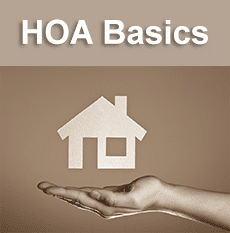 Homeowners associations, or simply HOAs, are corporations or the legal entities set up by real estate developers in order to maintain the common areas of developments and managing the homes in residential subdivisions or condominium developments.
Homeowners associations, or simply HOAs, are corporations or the legal entities set up by real estate developers in order to maintain the common areas of developments and managing the homes in residential subdivisions or condominium developments.
In today’s market most condominium developments and townhomes have an HOA, which is created after the development has been completed and before sales and occupation of the units has commenced. HOAs take care of everything from maintenance and repairs, and gardening to handling the building insurance and compliance with building code.
History
Homeowner associations first emerged in the U.S during the mid nineteenth century. They had limited growth until the 1960’s, but due to rapid expansion of homeownership and large-scale residential development, the condominium lifestyle became popular. That in turn further led to the modification of federal mortgage rules to include condominiums and cooperatives.
Features Of A Homeowners Association
- Membership is mandatory for all the property owners in the development
- Members are usually charged a monthly service fee
- The HOA has the authority to enforce the standards of design and maintenance of the development
- An HOA is a corporation with formal rules and regulations
- It is run by a governing board comprised of members that are elected by the property owning members of the association
- The board appoints and supervises a property management company in order to enact and enforce the maintenance issues of the development
- Many HOAs publish a regular newsletter
There are various restrictions that are enforced by these associations, such as parking restrictions, fencing restriction, pool restrictions, and maintenance of the development, as well as many other features controlled by the HOA.
Members often have a love-hate relationship with their associations. It is possible to be annoyed by the rules of the association and still appreciate that an HOA protects the value of their houses and neighborhood.
The rules and regulation are there to ensure maintenance, defining the limits of behavior, such as limiting the color of paint to a predefined, approved palette. They prevent the neglect of units or such things as members who leave vehicles dismantled on the street. However, these same rules can be oppressive, overzealously implemented and overbearing.
Things You Should Keep In Mind
The prospective homebuyers should keep certain things in mind before going for any property under the management of a homeowners association:
- Go through the covenants, conditions and restrictions associated with the property and make certain that you understand and are comfortable with the terms and conditions
- As the cost of HOA dues vary according to the property make sure you have room for them in your budget
- If you fail to pay dues in any way, the association can take legal action to satisfy the debt
There are pros and cons to everything, when it comes to buying it to an HOA maintained development, it depends on the individual whether this type of shared property management is suitable or not. Having an association take care of many of the common functions of a building or development can bring some real practical advantages. The price, as well as financial, is the set of rules and restrictions that come with it.


About The Author: Karengustin
More posts by karengustin